Sports
Comebacks, close calls, South Carolina routs: How the women’s Sweet 16 was built
Published
6 مہینے agoon
By
l955w
Two No. 5 seeds and a No. 7 broke through to the Sweet 16. And the top four seeds advanced to the regional semifinals in two regions — Albany 1 and Portland 4.
The real story of the tourney revolves around the comebacks and close calls. LSU and Duke each had to overcome double-digit deficits in the second round. Iowa, UCLA, Indiana, Stanford, Colorado and Baylor all trailed in the second half before clinching a spot in the Sweet 16. UConn got a late scare from Syracuse.
Sure, the results have mostly followed the seeds. That doesn’t mean all of it was easy.
The only truly big upset of the second round — No. 7 seed Duke bouncing No. 2 seed Ohio State in Columbus — shook things up a bit as we reseed the field ahead of the regional semifinals. The No. 1s are the same, but Iowa was close to falling off the top line with its squeaker at home against West Virginia.
The good news about few upsets in the first four days is that the next four game days could be historic. LSU vs. UCLA and Oregon State vs. Notre Dame, with Texas vs. Stanford and Iowa vs. the Tigers or the Bruins potentially on the horizon. A game with Paige Bueckers and JuJu Watkins on the same court would be a must-see.
Take in how the new bracket would look with some fine-tuning — and get ready to tip it off again Friday.
South Carolina Gamecocks
Original seed: No. 1 overall (Region 1 in Albany)
NCAA tournament results: Defeated 16-seed Presbyterian 91-39; defeated 8-seed North Carolina 88-41
Dawn Staley said after Sunday’s game against North Carolina that it was the Gamecocks’ best performance in a long time. Apart from its two victories over Kentucky, Sunday’s 47-point win is South Carolina’s largest margin of victory over a Power 5 opponent this season. It’s hard to imagine the Gamecocks playing any better than hanging that lopsided win on the Tar Heels after beating them by just seven early in the season. It’s also hard to imagine anyone beating the Gamecocks if they play at this level. For most of the season, the discussion of South Carolina’s best player was about Kamilla Cardoso and Te-Hina Paopao. The answer today might be MiLaysia Fulwiley. The freshman, who was also the MVP of the SEC tournament, racked up 20 points with four 3-pointers, 9 rebounds, 3 steals and 3 blocks, and she has led South Carolina in scoring in three of its past four games.
Up next: 4-seed Indiana (Friday, 5 p.m. ET, ESPN)
Texas Longhorns
Original seed: No. 1 (Region 4 in Portland)
NCAA tournament results: Defeated 16-seed Drexel 82-42; defeated 8-seed Alabama 65-54
Madison Booker’s transition from forward to point guard after Rori Harmon’s injury is remarkable enough. That she knows exactly what her team needs of her game to game is savvy and basketball IQ that few players have, let alone a freshman playing in her first NCAA tournament. She took just 11 shots and found teammates to the tune of 14 assists against Drexel. In the win over Alabama, she looked for her shot immediately and scored eight of her 21 points in the first quarter, including the Longhorns’ first two buckets in a game in which they never trailed.
Up next: 4-seed Gonzaga (Friday, 10 p.m. ET, ESPN)
USC Trojans
Original seed: No. 1 (Region 3 in Portland)
NCAA tournament results: Defeated 16-seed Texas A&M-Corpus Christi 87-55; defeated 8-seed Kansas 73-55
The last time USC was in the Sweet 16, JuJu Watkins wasn’t born yet. But she certainly has given rebirth to the program. Her 28 points led the way Sunday, but it was her five points late in the third quarter that mattered most. A game that USC had completely controlled was somehow slipping away. Nine straight points by Kansas cut the Trojans lead to one. A 3-pointer by Watkins followed by two free throws restored the cushion. Watkins then assisted on Kayla Padilla’s 3-pointer early in the fourth. The lead was back to 10, and USC was on its way the Sweet 16 for the first time since 1994.
Up next: 5-seed Baylor (Saturday, 5:30 p.m. ET, ESPN)
Iowa Hawkeyes
Original seed: No. 1 (Region 2 in Albany)
NCAA tournament results: Defeated Holy Cross 91-65; defeated West Virginia 64-54
A sigh of relief was felt all over Iowa when the Hawkeyes survived West Virginia. Caitlin Clark plays on. Her 32 points didn’t come easily, as the Mountaineers defined the game’s style: physical and plodding. That Clark equaled her season low with just three assists attests to just how good West Virginia’s game plan was. It wasn’t until a 12-2 Iowa run in the final two minutes — sparked by a Sydney Affolter 3-point play and cemented by six Clark free throws — that a win in Clark’s final game at Carver-Hawkeye Arena would be assured. Along the way, Clark passed Kelsey Plum one more time, setting the record for most points in a single season. Iowa’s next opponent, Colorado, represents another veteran physical team — one the Hawkeyes beat in last year’s Sweet 16.
Up next: 5-seed Colorado (Saturday, 3:30 p.m. ET, ABC)
Notre Dame Fighting Irish
Original seed: No. 2 (Region 1 in Albany)
NCAA tournament results: Defeated 15-seed Kent State 81-67; defeated 7-seed Ole Miss 71-56
With only six healthy players, the approach is simple for Notre Dame: Rely on your best players for production and stay out of foul trouble. So far, so good for the Irish, who have now won 10 consecutive games even with the slim roster. Hannah Hidalgo, Maddy Westbeld and Sonia Citron have scored 71% of Notre Dame’s points through two games, and no one has fouled out yet. In fact, Notre Dame put the Rebels on the free throw line only 11 times in a game it dominated from start to finish. Fueled by Hidalgo and her nation-leading 4.6 steals per game, Notre Dame boasts a top-10 defense in points allowed per play and has gotten better in the postseason.
Up next: 3-seed Oregon State (Friday, 2:30 p.m. ET, ESPN)
UConn Huskies
Original seed: No. 3 (Region 3 in Portland)
NCAA tournament results: Defeated 14-seed Jackson State 86-64; defeated 6-seed Syracuse Orange 72-64
Is the shadow of Caitlin Clark so large that it somehow has rendered Paige Bueckers underrated? Bueckers, coming off an ACL injury that sidelined her for all of the 2022-23 campaign, is having a better season than she did as a freshman in 2020-21, when she was the consensus national player of the year (in the same season Clark began her career at Iowa). And Bueckers has been even better in two tournament games, averaging 30.0 points on 56.8% shooting; throw 11.5 rebounds, 6.5 assists and 3.5 steals in there too. No player, except perhaps Clark, has contributed more to a pair of wins than Bueckers, who will be playing in her third Sweet 16 and the 30th straight for the Huskies.
Up next: 7-seed Duke (Saturday, 8 p.m. ET, ESPN)
Stanford Cardinal
Original seed: No. 2 (Region 4 in Portland)
NCAA tournament results: Defeated 15-seed Norfolk State 79-50; defeated 7-seed Iowa State 87-81 OT
In last year’s second round, Stanford lost at home and failed to score even 50 points. Sunday at Maples Pavilion, the Cardinal won a second-round game in which one of their players almost got to 50 by herself. With 41 points and 16 rebounds, Kiki Iriafen carried Stanford into the program’s 29th Sweet 16 with a win over Iowa State in what was an instant classic. All-American Cameron Brink was in foul trouble the entire game and fouled out in regulation with just eight points. That left things to Iriafen, who missed only two shots in the fourth quarter and overtime and had 17 points in that time. It marked the first 40-point game for Iriafen, but she had scored over 30 twice this season, including 36 in a close win over Oregon State in a game Brink missed. The Pac-12’s most improved player has 58 points through two games.
Up next: 3-seed NC State (Friday, 7:30 p.m. ET, ESPN)
UCLA Bruins
Original seed: No. 2 (Region 2 in Albany)
NCAA tournament results: Defeated 15-seed California Baptist 84-55; defeated 7-seed Creighton Bluejays 67-63
Two things have become evident about the Bruins over the past month: They aren’t at the same level they were in November and December; and they are still good enough, particularly on defense, to get to the first Final Four in program history. Of course, the caveat exists that the path to Cleveland is blocked with LSU then possibly Iowa. UCLA’s defense, which completely shut down a veteran, good-shooting Creighton team, primarily got the Bruins through to a second consecutive Sweet 16. Having a healthy and consistently productive Lauren Betts, who had 20 points against the Bluejays, is the other key. At 6-foot-7, she is UCLA’s differentiator. No team left in the tournament except South Carolina with Kamilla Cardoso has a player with that size and potential impact.
Up next: 3-seed LSU (Saturday, 1 p.m. ET, ABC)
LSU Tigers
Original seed: No. 3 (Region 2 in Albany)
NCAA tournament results: Defeated 14-seed Rice 70-60; defeated 11-seed Middle Tennessee 83-56
Kim Mulkey described a sluggish effort in the first round against Rice as “bad” and “ugly.” She might have described the first half against Middle Tennessee the same way. Just over a minute into the second half, the Conference USA champs led 41-32. Then LSU’s talent took over in a flash and the outlook got much better for the Tigers. Ten straight points, five of which came from freshman Mikaylah Williams, gave LSU the lead — and it was all Tigers from that point. The defense of the national title was back on track. Flau’jae Johnson led the way with 21 points, and 76 of LSU’s 83 points came from four players: Johnson, Williams, Angel Reese and Aneesah Morrow.
Up next: 2-seed UCLA (Saturday, 1 p.m. ET, ABC)
NC State Wolfpack
Original seed: No. 3 (Region 4 in Portland)
NCAA tournament results: Defeated 14-seed Chattanooga 64-45; defeated 6-seed Tennessee 79-72
Perhaps it wasn’t the Wolfpack’s offense struggling the past few games as much as they just needed to get more from Saniya Rivers. Against the Lady Vols, they did. Rivers failed to hit double figures in any of NC State’s three ACC tournament games, and despite putting up 16 points in the first round against Chattanooga, she still didn’t look like herself. But she certainly did in tallying 20 points, 6 rebounds and 3 blocks versus Tennessee. The Wolfpack’s 44.8% field goal rate was their highest since Feb 18. That included 61% shooting during a first half in which NC State looked like a different team than it did in Round 1. The guard trio of Rivers, Aziaha James and Zoe Brooks combined for 58 points on Monday, and the Wolfpack looked more like the team that had convincing wins over fellow Sweet 16 participants Colorado, UConn, Notre Dame and Duke earlier this season.
Up next: 2-seed Stanford (Friday, 7:30 p.m. ET, ESPN)
Oregon State Beavers
Original seed: No. 3 (Region 1 in Albany)
NCAA tournament results: Defeated 14-seed Eastern Washington 73-51; defeated 6-seed Nebraska 61-51
In March 2023, Talia von Oelhoffen was having surgery to repair her knee while her team missed the NCAA tournament for the second straight year. Fast-forward 12 months and she scored 19 points and had eight assists to get the Beavers to their first Sweet 16 in five years. As an early qualifying freshman, von Oelhoffen joined Oregon State in January 2021 (during what should have been her second semester of her senior year of high school) and became the team’s fourth-leading scorer. She had a total of 10 points in NCAA tournament games against Florida State and South Carolina. Now she’s the elder stateswoman on an even-better team that relies heavily on two freshmen and two sophomores. One of the sophomores, Raegan Beers, is Scott Rueck’s best player, but von Oelhoffen, with her experience, might be his most important.
Up next: 3-seed Notre Dame (Friday, 2:30 p.m. ET, ESPN)
Indiana Hoosiers
Original seed: No. 4 (Region 1 in Albany)
NCAA tournament results: Defeated 13-seed Fairfield 89-56; defeated 5-seed Oklahoma 75-68
Indiana, one of the best shooting teams in the country, was pushed continually by the Sooners and ultimately had to turn to its defense. The Hoosiers are third nationally in 2-point field goal percentage but missed 18 layups. They are the leaders in 3-point percentage but missed 13 of 16 3s. This wasn’t supposed to be the formula to get Indiana to a third Sweet 16 in four years; it was simply the winning one. Mackenzie Holmes, who carried the Hoosiers on offense, disrupted two Sooners shots and made a late steal in a game-deciding 10-0 run. Holmes scored 29 points, including 20 in the second half, in a game that was tied 10 times and had 21 lead changes.
Up next: 1-seed South Carolina (Friday, 5 p.m. ET, ESPN)
Gonzaga Bulldogs
Original seed: No. 4 (Region 4 in Portland)
NCAA tournament results: Defeated 13-seed UC Irvine 75-56; defeated 5-seed Utah 77-66
The third-best 3-point shooting team in the country hadn’t looked like it lately. Gonzaga had been just 12-for-43 from beyond the arc in its previous two games. The slump ended against the Utes. The Zags equaled those 12 made 3s on just 22 attempts, shooting themselves into the program’s first Sweet 16 since 2015. That was the first year under current coach Lisa Fortier after she had taken over for Kelly Graves. Sisters Kayleigh Truong and Kaylynne Truong — playing for the last time in McCarthey Athletic Center in Spokane, Washington — combined to hit seven 3-pointers versus Utah, and post player Yvonne Ejim had 17 points to extend her streak of games scoring in double figures to 39.
Up next: 1-seed Texas (Friday, 10 p.m. ET, ESPN)
Duke Blue Devils
Original seed: No. 7 (Region 3 in Portland)
NCAA tournament results: Defeated 10-seed Richmond 72-61; defeated 2-seed Ohio State 75-63
Middle Tennessee and Iowa State have the biggest comebacks in this NCAA tournament, but the Blue Devils are the true comeback kids. Down nine at the half, they steamrolled Richmond in the second half of their first-round meeting. Then Duke fell behind Ohio State by 16 in the second quarter Sunday only to outscore the Buckeyes 43-27 on their home floor in the second half to win going away. It was the second biggest upset of a tournament that has been marked by so much chalk. Sophomore Reigan Richardson was Duke’s leading scorer in the regular season — at 12.4 PPG. She has more than doubled that (26.5 PPG) on 21-for-36 shooting in two games. Richardson was a second-team All-ACC honoree, but she joins Iriafen as the breakout stars of the tournament.
Up next: 3-seed UConn
Baylor Bears
Original seed: No. 5 (Region 3 in Portland)
NCAA tournament results: Defeated 12-seed Vanderbilt 80-63; defeated 4-seed Virginia Tech 75-72
Jada Walker picked an opportune night to have the game of her career. And she actually had the game of her career in one half. In two years at Kentucky and one at Baylor, Walker had never scored 26 points in a game, let alone in one half. On Sunday, those included a half-court 3-pointer at the third-quarter buzzer and Baylor’s final nine points. The junior point guard finished with 28 points and three assists. Without Walker’s clutch play, the Bears would not have survived a Hokies team playing without star Elizabeth Kitley to get to their first Sweet 16 under Nicki Collen.
Up next: 1-seed USC (Saturday, 5:30 p.m. ET, ESPN)
Colorado Buffaloes
Original seed: No. 5 (Region 2 in Albany)
NCAA tournament results: Defeated 12-seed Drake 86-72; defeated Kansas State 63-50
How good was Colorado’s defense against Kansas State? The Buffaloes didn’t score for the first 6:18 of the fourth quarter of a tight game — and still won by double figures. They put the clamps on Wildcats star Ayoka Lee (10 points, nine shots) all game long and forced 22 turnovers, but it was the mere 15 points Colorado allowed in the second half that won the game. That got the Buffs to their second straight Sweet 16 after not having made it this far in the NCAA tournament in 20 years.
Up next: 1-seed Iowa (Saturday, 3:30 p.m. ET, ABC)
You may like
-
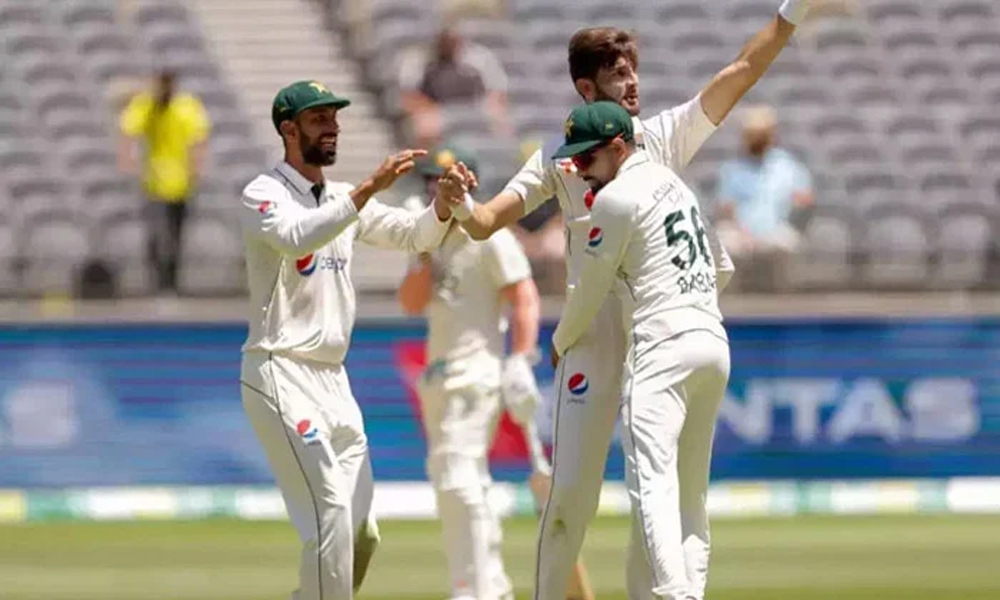

PCB advertises for Red Ball High-Performance Coach
-
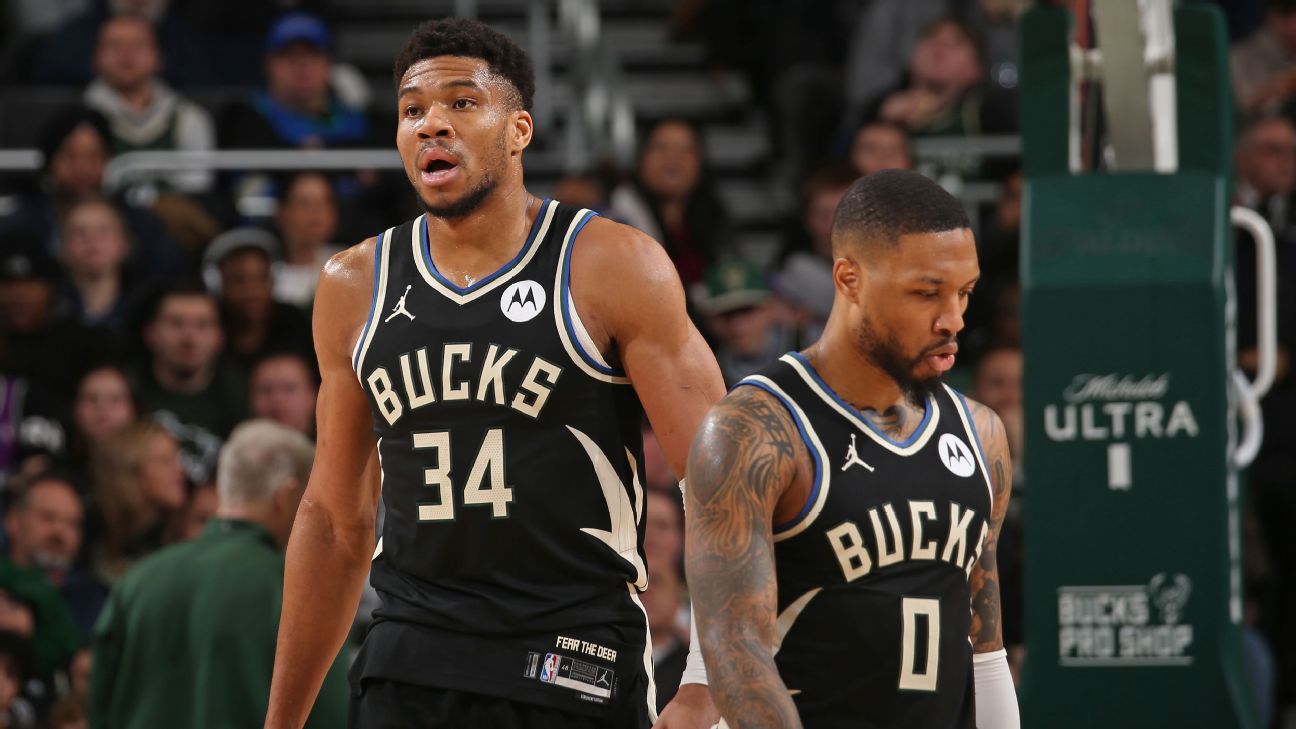

Is continuity enough to get the Bucks back into title contention?
-
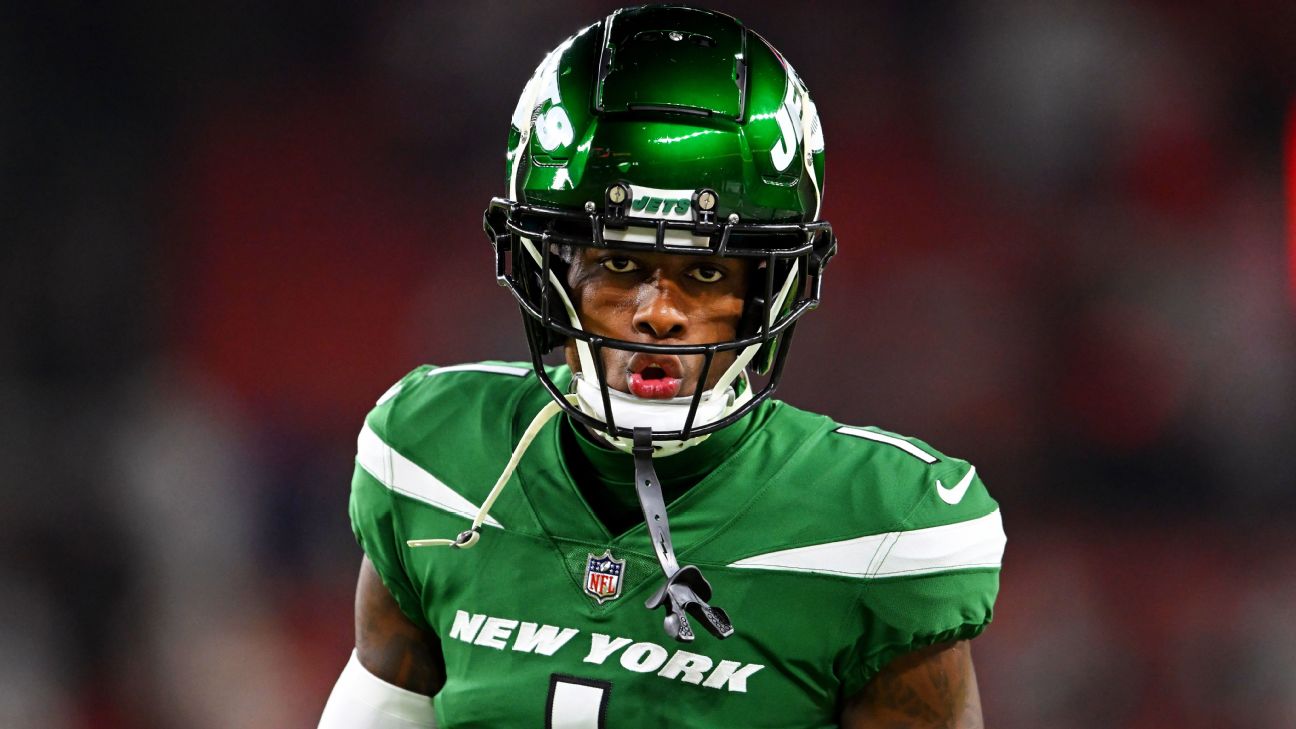

Will Sauce Gardner’s quest to be the best CB be overshadowed by lack of interceptions?
-


Revised schedule of Pakistan vs England Test series announced
-


ICC delegation satisfied over Champions Trophy 2025 preparations
-
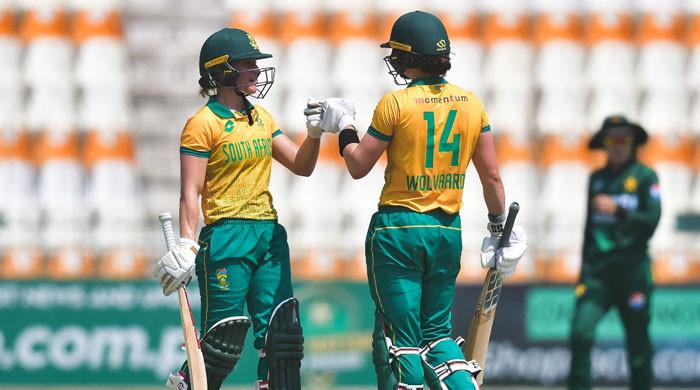

South Africa inflict 2-1 defeat over Pakistan in women’s T20I series
-
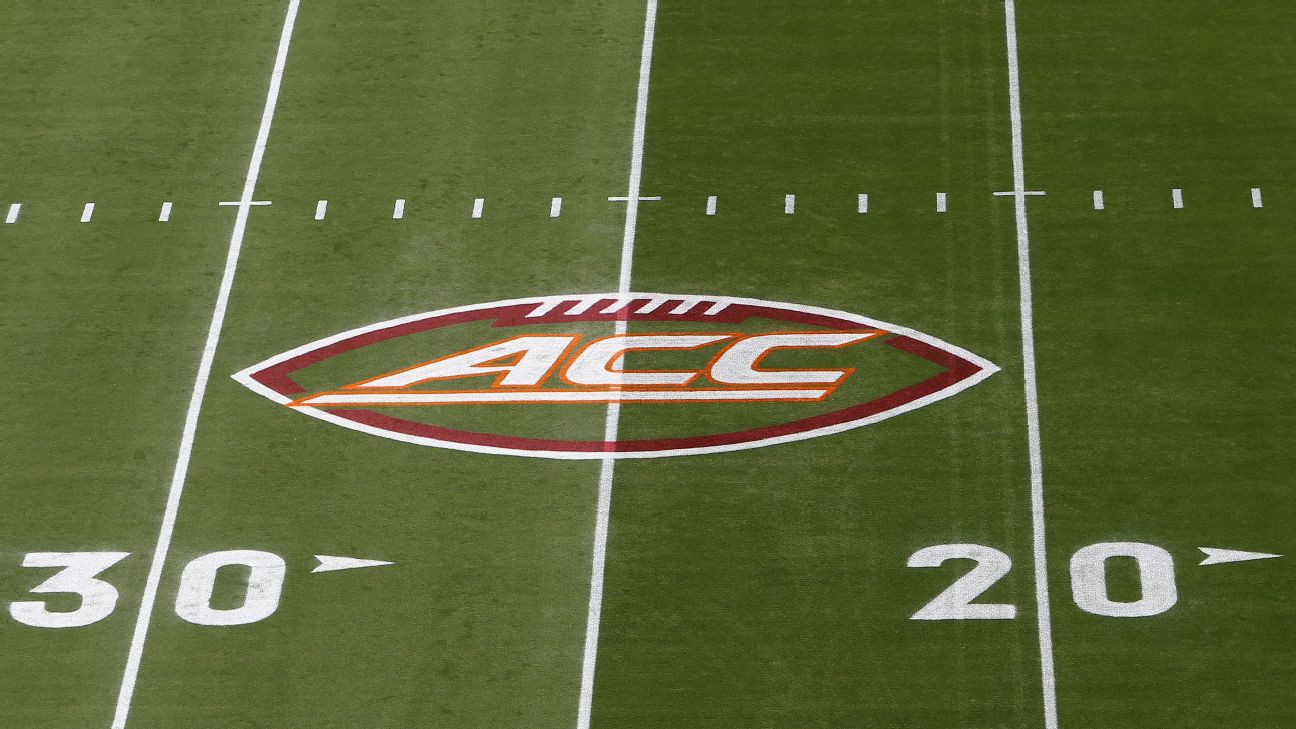

Sources: ACC, Clemson, FSU renew revenue talks
Sports
PCB advertises for Red Ball High-Performance Coach
Published
10 گھنٹے agoon
ستمبر 21, 2024By
l955w
Lahore: Pakistan Cricket Board (PCB) issued an advertisement to search for a High-Performance Coach for the Red Ball Team.
The High-Performance Coach will assist the Head Coach in game planning while he will also work closely with the Head Coach in pre- and post-tournament preparations to enhance performance.
As per PCB, five years’ experience and minimum level two coaches are eligible to apply, aspirants can submit applications till October 7.
In the series against Bangladesh, Tim Nelson took over as high-performance coach, brought in by Red Ball coach Jason Gillespie from South Australia.
It is also reported that Tim Nelson will be Red Ball’s high-performance coach, advertised as a necessary step for a permanent appointment.
Sports
Is continuity enough to get the Bucks back into title contention?
Published
15 گھنٹے agoon
ستمبر 21, 2024By
l955w
Trent had known Rivers since he was 6 years old thanks to his father, Gary Trent Sr., whose NBA career overlapped with Rivers’. Trent Jr. had been a productive player with the Toronto Raptors for three and a half seasons but failed to reach an extension or find a multiyear deal on the free agent market. Word was out that Trent could be seeking a one-year deal for the 2024-25 season, and Rivers jumped at the opportunity.
The Bucks were seeking a replacement in their starting lineup for guard Malik Beasley and saw a youthful energy in Trent, who could fit smoothly alongside Milwaukee’s superstar duo of Giannis Antetokounmpo and Damian Lillard.
Signing Trent to a one-year deal served as the biggest offseason addition for a team that prioritized depth signings over bold moves. The Bucks also swapped out players such as Jae Crowder and Patrick Beverley, who saw their roles and production reduced during the postseason, for a new crew of veteran backups in Delon Wright and Taurean Prince.
After a year of change and turnover for the Bucks — in the past 12 months they swapped Jrue Holiday for Lillard, and hired and fired coach Adrian Griffin before turning to Rivers midway through the season — a quiet summer was welcome for a team that enters the 2024-25 season trying to balance the benefits of continuity with the urgency of its championship expectations.
“We have that stability,” Antetokounmpo said the day after the team’s first-round playoff loss to the Indiana Pacers. “We’re not questioning and trying to figure out how it’s going to look moving forward.
“Now that you know, you just got to work.”
Bucks general manager Jon Horst was limited in his flexibility to change his roster this offseason. Milwaukee’s draft picks were depleted by the trade for Holiday in 2020 and for Lillard last year. Because of the restrictions of the new collective bargaining agreement, the Bucks did not have salary cap space and weren’t allowed to aggregate contracts, acquire a player via sign-and-trade or use the tax midlevel exception.
It left them with little options aside from adding players via the veterans minimum.
Besides, it had still been less than a year since Milwaukee swooped in for Lillard before training camp, sending a package to the Portland Trail Blazers that included Holiday — the starting point guard on the Bucks’ 2021 championship team — who was then sent to the eventual champion Boston Celtics. It was a bold move that paired an All-NBA guard in Lillard with a two-time MVP in Antetokounmpo, with each being the most accomplished teammate either player had ever played with.
Lillard’s arrival also paid off in another way, as Antetokounmpo committed to the Bucks by signing a three-year, $186 million max extension that begins this season.
Antetokounmpo inked his deal one day before the start of the season, but the Bucks’ positive momentum didn’t carry into the games.
Lillard was slow to adjust to a new environment and struggled to find on-court chemistry with Antetokounmpo. Griffin was fired 43 games into the season (with a 30-13 record) before the team turned to Rivers, who went 17-19. With Antetokounmpo missing the entire six-game series against the Pacers because of a strained left calf and Lillard limited by an Achilles injury, the Bucks crashed out in the first round of the playoffs for a second straight season.
When Rivers took over the team in February, he acknowledged how difficult it would be to turn a team around midseason. Now with a full offseason and training camp, he will have an opportunity to establish a style of play, including by adding role players who better fit his vision.
“Think about it: Giannis worked out all [last] summer not knowing he was going to have Dame,” Rivers said the day after last season’s playoff exit. “Dame worked out a little bit, not knowing he was going to have Giannis. Khris [Middleton], the same way. Now all three of them get to work out this summer knowing some of the things we’re going to do.
“The most important stuff is the sets and the stuff that you’re going to run, giving it to them long before camp starts. Because it’s easy for a star player to understand what he can do, it’s better when he understands how he can make everybody else better through those sets.”
The Bucks are betting on a full offseason and training camp to help build chemistry for Lillard and Antetokounmpo. Still, they were encouraged by the numbers with those two players on the floor last season: The team was plus-10.2 points per 100 possessions last season when their two stars shared the floor.
“I’m willing to put in work this summer. I think I have guys around me that they’re willing to do so,” Antetokounmpo said at the end of last season. “I saw how Dame was after the [playoffs]. I saw how Khris [Middleton] was after the game. … I know they’re going to put in the work.”
The question for Milwaukee is how the Bucks will compare to the rest of a stacked Eastern Conference.
Boston is coming off a historic season in which it won its league-leading 18th NBA championship. The Philadelphia 76ers just reloaded by adding superstar Paul George to play alongside Joel Embiid and emerging star Tyrese Maxey. The New York Knicks strengthened their core by adding Mikal Bridges. Emerging young teams, the Cleveland Cavaliers, Orlando Magic and Pacers, are on the rise, having finished with playoff spots last season.
Meanwhile, the Bucks return one of the oldest rosters in the NBA with four of their projected starters over 30. Antetokounmpo, who has been injured during the last two postseasons, turns 30 this season. Lillard will be 35 in October. Middleton is 34 and coming off offseason surgery on both ankles. Center Brook Lopez is 36.
“I always like a team that wins to have a little bit of experience, which comes from being a little bit older, knowing how to play the game and have that corporate knowledge of the game,” Antetokounmpo said at the end of last season. “And a little bit of energy.”
The age of its roster and the pressure to maximize each season of Antetokounmpo’s prime — “With Giannis, you’re always on the clock,” Horst told ESPN at the start of last season — guided Milwaukee’s bold moves over the past year in pursuit of another title.
Now the Bucks are counting on an offseason defined by continuity, a few additions to their depth and some better health during the postseason to give them a chance at another championship.
“We’re getting older. We’re not getting any younger, but that doesn’t mean we cannot still perform at a high level,” Antetokounmpo said. “It’s hard to say, ‘Yeah, we’re old and you have to make changes.’ Because these guys, they’re beasts.”
Sports
Will Sauce Gardner’s quest to be the best CB be overshadowed by lack of interceptions?
Published
16 گھنٹے agoon
ستمبر 21, 2024By
l955w
FLORHAM PARK, N.J. — Sauce Gardner doesn’t do vacations. The New York Jets cornerback doesn’t believe in them. The idea of chilling at a five-star resort, sipping fruity libations on a white-sand beach, doesn’t appeal to him. First of all, he doesn’t drink alcohol. No sauce for Sauce. Secondly, he’s a homebody. The Jets’ trip to London in two weeks to face the Minnesota Vikings will be his first time out of the country. He said he hasn’t taken a true vacation since entering the NFL in 2022, offering an existential reason. “Me, personally, I just feel like you’re just trying to escape the lifestyle that you live,” Gardner said in a quiet moment at his locker. “We play football, and we should be training. So going on that long vacation is getting away from what you’re supposed to be.” Which explains why he reported to the Jets’ facility two weeks after last season ended to begin training, three months ahead of the official start to the offseason program. It’s why his new, sprawling home in New Jersey includes a recovery room, complete with a red-light therapy bed, sauna, cold tub, treadmill and stationary bike. From the time he was 4 years old, playing flag football in the Tiny Mites league in the Seven Mile section of Detroit, Gardner’s singular focus has been to play in the NFL and be the best cornerback there ever was. A lot of kids dream that dream, but his early-career trajectory aligns with his life plan, and he’s just 24. Gardner is the only cornerback since the NFL-AFL merger in 1970 to be named first-team All-Pro in each of his first two seasons. Only three defensive players have pulled that off: former New York Giants legend Lawrence Taylor, Dallas Cowboys pass rusher Micah Parsons and Gardner, who said his individual goal this season is to be Defensive Player of the Year. Now if he could just get his hands on a pass or two, maybe that would silence critics who suggest the sauce isn’t as advertised. He will take a 26-game interception slump into Thursday night against the New England Patriots at MetLife Stadium (8:15 p.m. ET, Prime Video). Big deal or nah? LONG BEFORE HE shadowed wide receivers, Gardner shadowed his big brother, Allante. Despite a six-year age difference, the two were inseparable growing up. Even though there was an open room in their house, they decided to share the same bedroom. Allante played football, so Sauce played football, following him into backyard games against the big kids. When Allante changed his uniform to No. 2, Sauce switched to No. 2. When Allante worked out with a trainer during his college offseasons — he was a running back/wide receiver at Saginaw Valley State and Lakeland University — Sauce tagged along. “He was always right next to me,” said Allante, who knew there was something special about Sauce when he learned at the age of 5 to ride a bike with no training or training wheels. Gardner was always fearless, according to Allante, who said his kid brother once broke his arm doing a backflip off a fence. He said they both acquired their work ethic from their mother, Alisa, a single mom who worked two jobs to support them. If one of them wanted to attend a football camp, she worked overtime to pay the fees. Gardner said one memory of living at the corner of Rowe Street and Seven Mile East made an impact. When he was 14, he saw a man fatally shot outside a liquor store. Out of fear, he didn’t tell anyone. “It just made me come to the realization that you can’t take anything for granted,” Gardner said. “Me just witnessing that, I was like, ‘Dang.’ I just had to make sure I was locked in on everything — football, school, all that — because I knew ultimately where I wanted to go.” Whatever direction Gardner goes, Allante is there with him — even if it’s not physically. Allante, who still lives in Detroit, is a vice president at Vayner Sports — the company that represents his brother. Sounding like an agent, but speaking as a blood relative, Allante believes Gardner has the potential to be “a once-in-a-lifetime player.” Cornerbacks are often evaluated based on their interception total. That calculus can’t be applied to Gardner, who has as many Pro Bowls on his résumé as career picks (two). In an ESPN survey of nearly 80 NFL coaches, scouts and executives, one unnamed personnel evaluator called Gardner “one of the most overrated players in the league.” The same survey ranked him the third-best corner, behind the Denver Broncos’ Pat Surtain II and the Cleveland Browns’ Denzel Ward. Former star Richard Sherman, a three-time All-Pro cornerback, believes Gardner has benefitted from geography. “Obviously, being in the New York market helps,” Sherman, a Prime Video analyst, said on a conference call with reporters. “It helped [Darrelle] Revis, it helps Sauce. … He’s incredibly worthy [of his accolades]. He has been named first-team All-Pro. It’s not because he hasn’t played well, but it definitely helps playing in that New York market and getting that focus on you and then playing well while you’ve got that focus.” For his money, Sherman said Surtain is the best all-around corner in the sport, adding, “If he was in a big market, if he was playing for the Dallas Cowboys, I don’t think there would be any debate because people would be watching him all the time.” WHEN TOLD OF Sherman’s comments, Gardner shrugged. He agreed to a certain extent, saying he does profit from playing in New York. But he said that it’s a double-edged sword: More eyes on you means more pressure. Even Sherman acknowledged, “New York can chew you up and spit you out the same way it can raise your game.” Gardner added, “A lot of times, there’s no in-between.” Gardner welcomes the scrutiny. Asked if he’s the best corner, he said simply, “I try to do it as if I’m the best.” Former cornerback Jason McCourty, who played 13 years, had initial questions about Gardner despite his lofty draft pedigree — fourth overall in 2022. Those questions didn’t last long. “Even coming in, I’m wondering how he’s going to do it, covering these guys man-to-man, coming from [the University of] Cincinnati — and he’s just been awesome,” said McCourty, now an ESPN analyst, in a phone interview. “To step into the NFL and to be able to cover some of the best wide receivers, to be an All-Pro and to hit the ground running is just completely elite.” But what about the lack of interceptions? McCourty said it shouldn’t be a barometer, that Gardner’s ability to neutralize wide receivers trumps his low interception total. Sherman believes the game has changed. Gone are the days, he said, when corners such as Deion Sanders and Champ Bailey made the Pro Football Hall of Fame with gaudy interception totals — 53 and 52, respectively. In 2023, Revis, the former Jets star, was elected on the first ballot with 29. “I do think interceptions are important, but I guess, in this day and age, [people] don’t because there’s just not a lot of guys getting them,” said Sherman, who made 37 in his career. While the interception total may not be eye-popping, Gardner is a pass-breakup machine. His career total of 33 is the third most among corners since he entered the league. If he’s getting close enough to defend passes, in theory, he should be catching some of them. He knows this; he doesn’t shy away from it. Asked his goals for 2024, he said, “Get more picks and keep grinding for that Defensive Player of the Year [award].” He wants at least four or five interceptions. Gardner spends time after practice on every-day drills, including catching balls from a Jugs machine. His coaches love his work ethic. As cornerbacks coach Tony Oden likes to say, “Just when you think you’ve arrived as a player … bad things start to happen.” Whenever coach Robert Saleh is asked about ways in which Gardner can improve, he usually responds: Intercept the ball more often. Oden, always pushing his protégé, said “there’s more meat on the bone.” Perhaps, but his career is off to a historic start. He has pitched a league-high six shutouts since 2022 — games in which he allowed zero receptions as the nearest defender with a minimum of 20 coverage snaps, according to NFL Next Gen Stats. Gardner received the All-Pro nod with a zero-interception performance last season. For a corner, that hadn’t occurred since 2010, when Revis and Nnamdi Asomugha both did it. Uncommonly tall for a corner at 6-foot-3, with 33½-inch arms, Gardner makes it difficult for receivers to escape his clutches. His size and physicality allow him to jam bigger receivers at the line of scrimmage, according to McCourty. What really impresses McCourty is how Gardner can stick to smaller, quicker receivers at the top of their routes. These skills, he believes, could make him one of the best corners of this era. “When you have a longer guy, a taller guy that can run, it’s kind of tough for a receiver,” Tennessee Titans receiver Tyler Boyd said. “It’s tough to just run away from the guy, knowing how long and athletic he is. But don’t get me wrong, he’s beatable. Every DB in this league is beatable.” The Titans proved that Sunday, beating Gardner on a 40-yard touchdown pass to Calvin Ridley. The coverage was tight, but quarterback Will Levis dropped the pass between Gardner and safety Chuck Clark. All told, Gardner allowed five catches for 97 yards when targeted, his most yards allowed as the nearest defender in his career, according to NFL Next Gen Stats. It was an uncharacteristic day for Gardner, who rarely surrenders chunk plays. Afterward, in the locker room, he was shaking his head. “I still don’t know how he caught that,” he said. IN THE SEASON-OPENING loss to the San Francisco 49ers, Gardner recognized a gadget play was coming. On a third-and-5 from the Jets’ 29, he alerted teammates to watch for a reverse. Linebacker C.J. Mosley heard him before the snap, adjusted and helped trap wide receiver Deebo Samuel in the backfield. Mosley credited Gardner, calling him one of the smartest players on defense. “He’s become a real student of the game,” Mosley said. “He’s a lot more vocal than he was as a rookie.” Gardner made the tackle and was credited with his first career sack because of Samuel’s intention to throw a pass. “He’s a film junkie,” Allante said. Allante said Gardner watches about an hour of game film every night in his home theater, learning opponents’ tendencies and critiquing his own performance. He described it as a singular focus, saying his brother possessed it at an early age. “He’s a different guy,” Allante said. “He don’t drink, he don’t smoke, he don’t party.” Outside of football, Gardner plays video games — he’s an accomplished gamer — and hones his golf swing in his home simulator. Golf is a new passion. He proudly declares that he broke 90 for the first time before training camp. Life is good for Gardner. Business is booming. The price for Gardner will increase in the coming years, perhaps next year, when he’s eligible for a contract extension. The ceiling on the cornerback market was raised recently, when Jalen Ramsey ($24.1 million per year) and Surtain ($24 million) signed extensions. With another good year, Gardner could leapfrog both to become the highest-paid corner. Gardner received a phone alert when Ramsey’s deal was completed, saying his first thought was: “Dang, Pat wasn’t even the highest-paid corner for a day.” He applauded the contracts, noting that corners finally are closing the gap with the highest-paid receivers, but said he’s not looking ahead to his potential blockbuster deal. Gardner’s job as a corner is to make those receivers seem invisible. He’s also had a knack for making quarterbacks shy away from him. In two games, he has been targeted only eight times as the nearest defender, having allowed five receptions for 97 yards. In the offseason, he asked the coaches to give him the added responsibility of covering the opponents’ No. 1 receiver. Philosophically, the Jets’ staff is opposed to doing that on an every-down basis, citing scheme and personnel considerations, but they’re giving him a taste of it. In the opener, Gardner traveled with Brandon Aiyuk for a handful of plays and allowed no catches. In Week 2, despite the long touchdown to Ridley, Gardner was given a huge responsibility with the game on the line. In the final minute, with the Titans in the red zone, down by a touchdown, Gardner shadowed DeAndre Hopkins on four straight pass plays. Levis avoided that matchup. The result: Three incomplete passes, a sack and a 24-17 victory for the Jets (1-1). “We have a special talent in No. 1,” defensive coordinator Jeff Ulbrich said, “and Sauce can do some things that are so unique and special.” Gardner welcomes the challenge. He doesn’t mind playing on an island, the same way Revis did back in the day. Given his dislike for vacations, it might be the only island he enjoys.
Sports
Revised schedule of Pakistan vs England Test series announced
Published
1 دن agoon
ستمبر 20, 2024By
l955w
KARACHI: Pakistan’s cricket board on Friday announced a revised schedule for a series it will hold against England next month, ending weeks of uncertainty including reports it could be moved abroad.
The first two Tests will be held back-to-back in Multan and the last in Rawalpindi, skipping Karachi where ongoing construction at the National Stadium has forced the Pakistan Cricket Board (PCB) to tweak the schedule.
“The series will start in Multan with the first Test from October 7-11 and the second Test — originally scheduled for Karachi — has been shifted to Multan, as the stadium in Karachi is undergoing (a) major facelift for next year’s Champions Trophy,” said a statement from the PCB.
The second Test will start from October 15, while the third in Rawalpindi will be staged from October 24.
The England men’s cricket team will arrive in Multan on October 2 for their second tour of Pakistan in two years.
The announcement ended weeks of frustrating wait by the England and Wales Cricket Board who were seeking clarity on the schedule.
Moreover, there were media reports of shifting the series to the United Arab Emirates (UAE) where Pakistan was forced to play its home matches from 2010 to 2019.
Revised schedule:
7-11 Oct – First Test, Multan
15-19 Oct – Second Test, Multan 2
4-28 Oct – Third Test, Rawalpindi


Demi Lovato shares untold story about negative experiences in career

Real-life Martha from ‘Baby Reindeer’ speaks out after impressive Emmy haul

Sean ‘Diddy’ Combs criticized over jokes about locking women at parties

Samsung’s new midrange Galaxy A55 has improved security, features | The Express Tribune

New Zealand in efforts to fast track consenting of major projects – Pakistan Observer
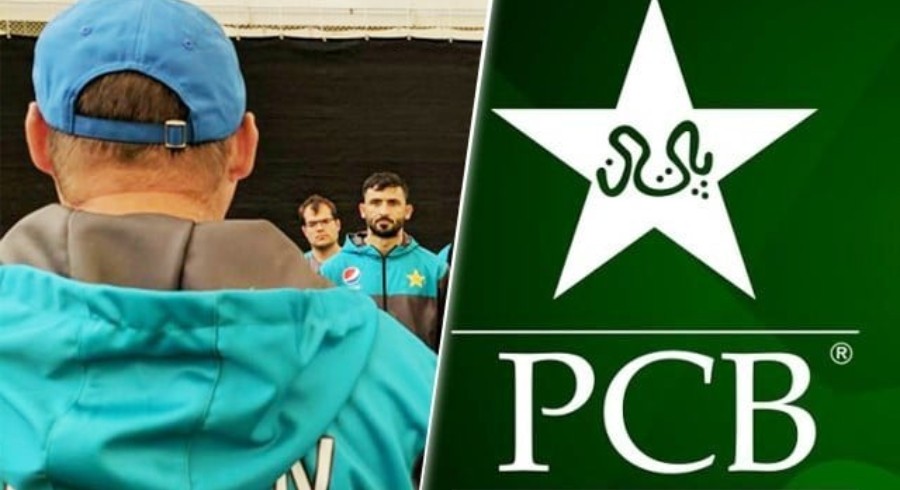
PCB opens applications for specialized red and white-ball coaches
Trending
-

 Technology6 مہینے ago
Technology6 مہینے agoSamsung’s new midrange Galaxy A55 has improved security, features | The Express Tribune
-

 Pakistan7 مہینے ago
Pakistan7 مہینے agoNew Zealand in efforts to fast track consenting of major projects – Pakistan Observer
-

 Sports6 مہینے ago
Sports6 مہینے agoPCB opens applications for specialized red and white-ball coaches
-

 Pakistan7 مہینے ago
Pakistan7 مہینے agoLegal issues hinder projects’ transfer | The Express Tribune
-
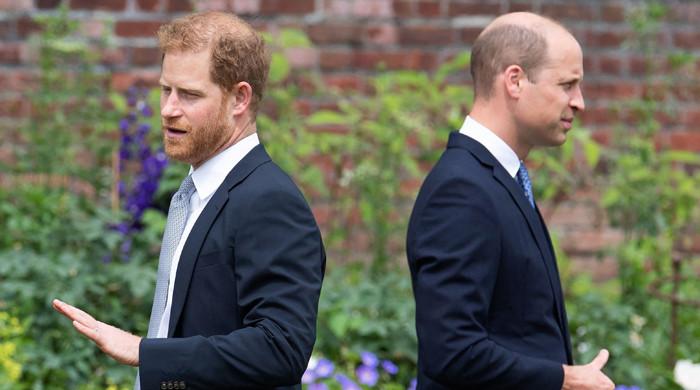
 Entertainment6 مہینے ago
Entertainment6 مہینے agoPrince William foils Prince Harry’s reunion plans ahead of UK return
-
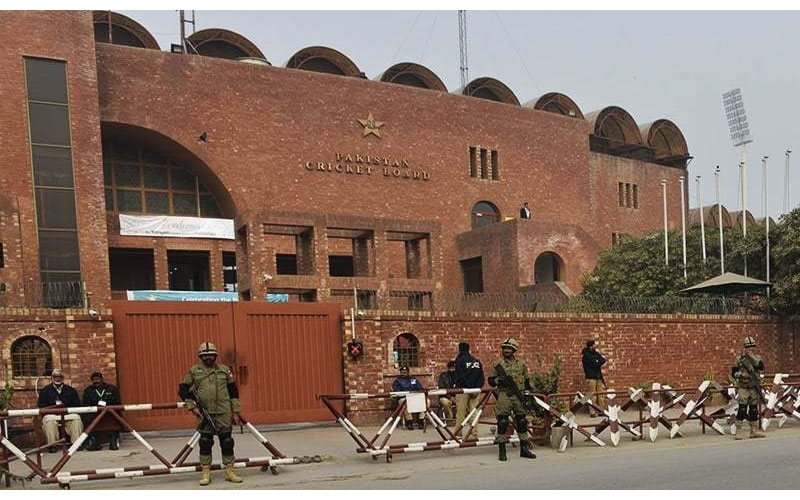
 Sports5 مہینے ago
Sports5 مہینے agoConversation continues between PCB, New Zealand for white ball series
-

 Pakistan7 مہینے ago
Pakistan7 مہینے agoNADRA NICOP fee March 2024 – Pakistan Observer
-

 Pakistan6 مہینے ago
Pakistan6 مہینے agoExperts call for regulation of ChatGPT in education | The Express Tribune
